
By Jeff Williams, Electrical Engineer
April 15, 2014
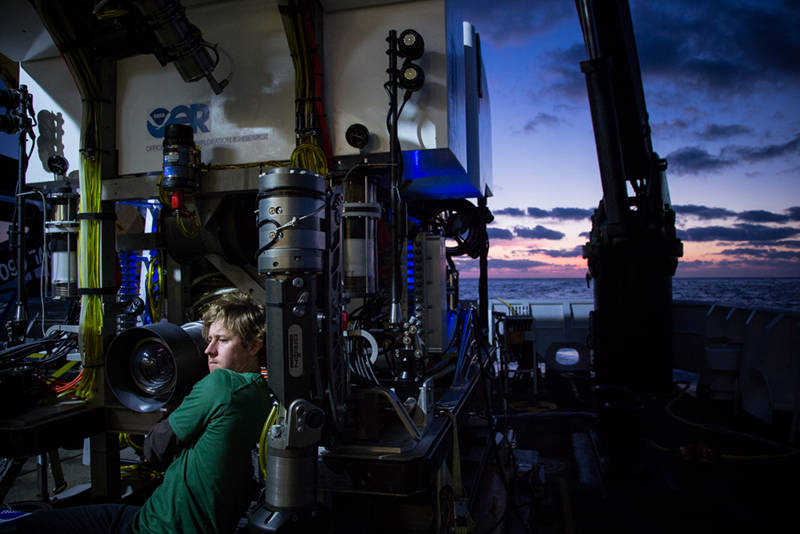
An artist in his medium. Todd Gregory works to fine tune the HD camera system at sunset onboard NOAA Ship Okeanos Explorer. Image courtesy of the NOAA Office of Ocean Exploration and Research, Exploration of the Gulf of Mexico 2014. Download larger version (jpg, 514 KB).
A talented engineer is an artist who paints with materials on the palette of the world.
Huh?
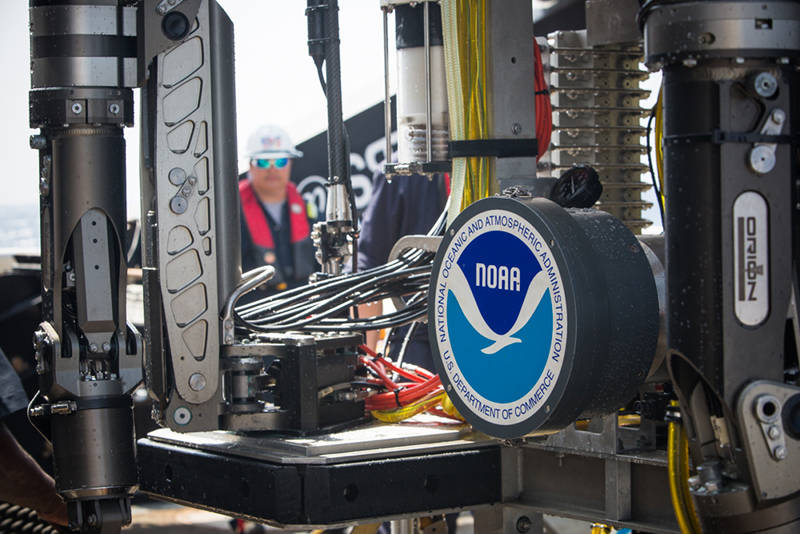
Hydraulics and HD - two of the most important items on any ROV. D2 has eight cameras and two manipulator arms, one of which is home to a brand new temperature probe. Image courtesy of the NOAA Office of Ocean Exploration and Research, Exploration of the Gulf of Mexico 2014. Download larger version (jpg, 541 KB).
An engineer is a creative artist. In the same way a writer faces the blank page or a sculptor the raw rock, the engineer faces the challenges of the problem to be solved with the science and mathematics of the profession applied through the lens of experience. As the adage goes, 'Anyone can design a bridge that stands. It takes an engineer to design one that barely stands.'
But stand it must. As a colleague once told me early in my profession, 'There are more ways to design a computer wrong than right.'

Sometimes form wins—D2 is an elegant and powerful 9,000 pounds, designed to bring optimal imagery topside, where it is then shipped to shore in real time. Image courtesy of the NOAA Office of Ocean Exploration and Research, Exploration of the Gulf of Mexico 2014. Download larger version (jpg, 708 KB).
So, what's my point? An engineer faces a design challenge and the solution proffered has to meet the needs incumbent to that challenge. Of course. But how the challenge is met, well, there's the rub. A good engineer will design a solution that not only meets the problem thoroughly, but with panache and flair.
There is elegance inherent in a good engineering solution. Sometimes this elegance is inscrutable except to those skilled in the art. But sometimes, that elegance transcends the sum of the parts and becomes an artistic statement available to all.
Have you figured it out yet? I'm talking about the remotely operated vehicle Deep Discoverer, ROV 'D2', and the engineers who designed and built it.
With miles of wire and a touchless oil-filled hose, you would be hard pressed to see a more elegant cabling layout. One that, by the way, allows convenient service access to a thousand or so termination points and cable connections.
Or consider the function of a hydraulic system that controls two independent manipulator arms each with seven independently articulating functions plus four deployable and rotatable carbon-fiber swing arms each with enough light to make a professional cinematographer smile. Hooked up to this system is a new temperature probe that is designed to sample discrete temperature differentials—this cruise we used it to learn more about a brine pool we discovered on Dive 2. In the future, a number of other sensors to help us understand the deep-sea environment can be integrated into this system. Oh, and D2 does all of this smoothly, surrounded by pressure three-times greater than that inside a scuba tank.
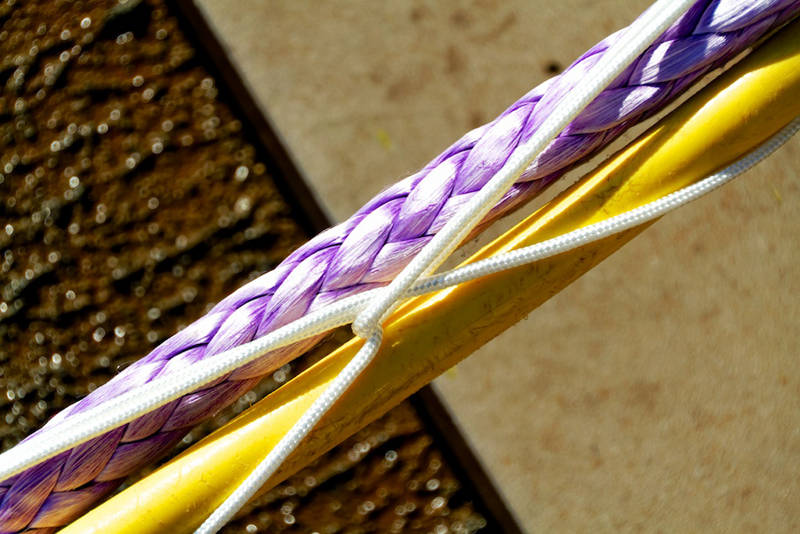
Aesthetically pleasing - D2's yellow tether that powers, controls, and links the ROV to Seirios, is daisy chained to the high tensile strength line that is used to lift and recover D2. The daisy chain releases like a zipper to aid the deck crew in a swift and safe recovery. Image courtesy of the NOAA Office of Ocean Exploration and Research, Exploration of the Gulf of Mexico 2014. Download larger version (jpg, 524 KB).
Consider the control system that allows either of two pilots to instantly access any of six thrusters, eight cameras, or 26 high-intensity LED lamps; to pirouette around a delicate deep-sea coral; or to pause motionless mere inches above the shiny surface of an underwater lake of brine.
The aesthetics of the vehicle itself with its brilliant white buoyancy foam and stark blue logo almost seem gratuitous in response. Almost.
Taken together they form a 6000-meter, 40-HP vehicle capable of delivering broadcast-quality high-definition television video from the unexplored reaches of the ocean.
That's a bridge that can stand and be admired.
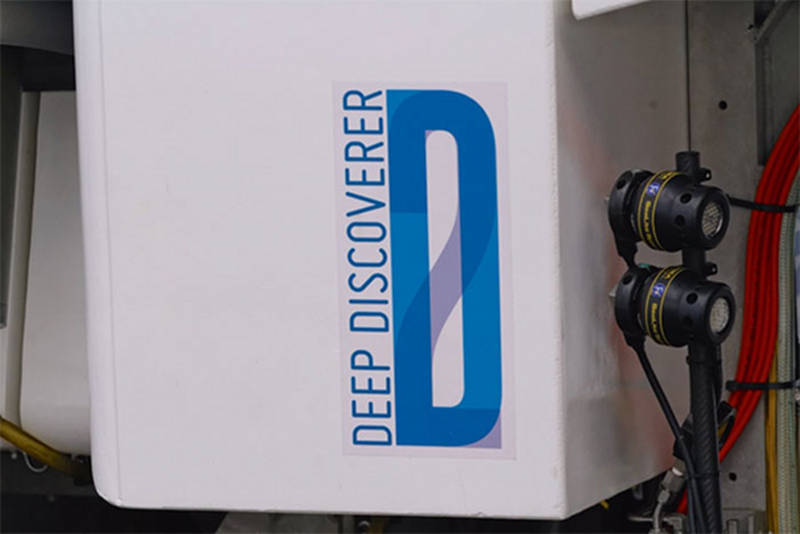
Gratuitous? I think not - the newly designed custom logo compliments the aesthetics of the ROV. Images courtesy of the NOAA Office of Ocean Exploration and Research, Exploration of the Gulf of Mexico 2014. Download image (jpg, 39 KB).
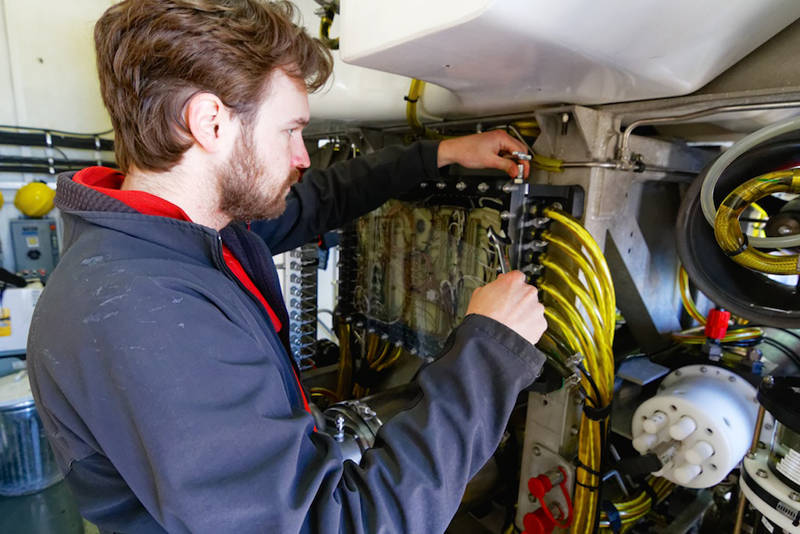
Quite literally miles of wire run through D2’s oil-encased “veins.” Here, Josh Carlson preps D2 for the next day’s dive. Images courtesy of the NOAA Office of Ocean Exploration and Research, Exploration of the Gulf of Mexico 2014. Download larger version (jpg, 448 KB).
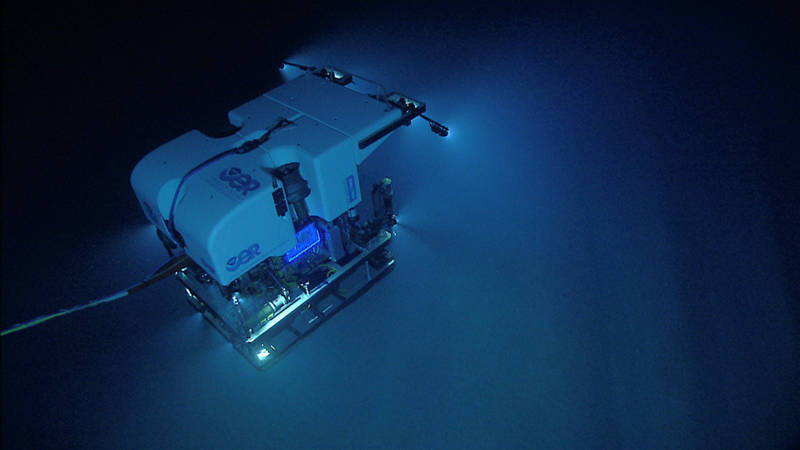
ROV Deep Discoverer as seen from the second part of the two-bodied system, camera sled Seirios, a mile beneath the ocean's surface.Images courtesy of the NOAA Office of Ocean Exploration and Research, Exploration of the Gulf of Mexico 2014. Download larger version (jpg, 1.3 MB).
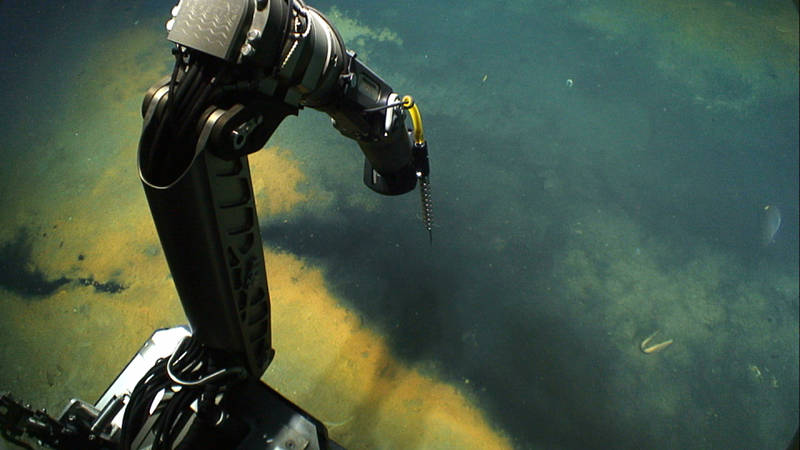
ROV Deep Discoverer uses its new temperature probe to learn more about the deep-sea environment around this brine pool discovered on Dive 2. Images courtesy of the NOAA Office of Ocean Exploration and Research, Exploration of the Gulf of Mexico 2014. Download larger version (jpg, 1.2 MB).